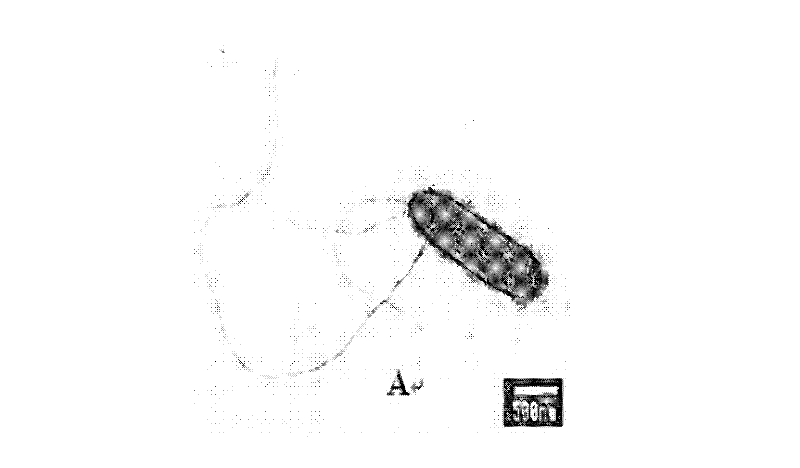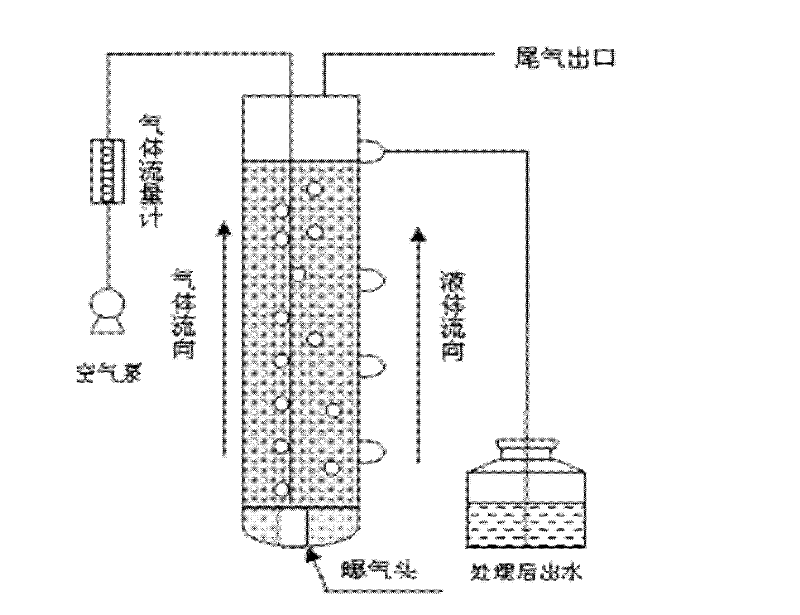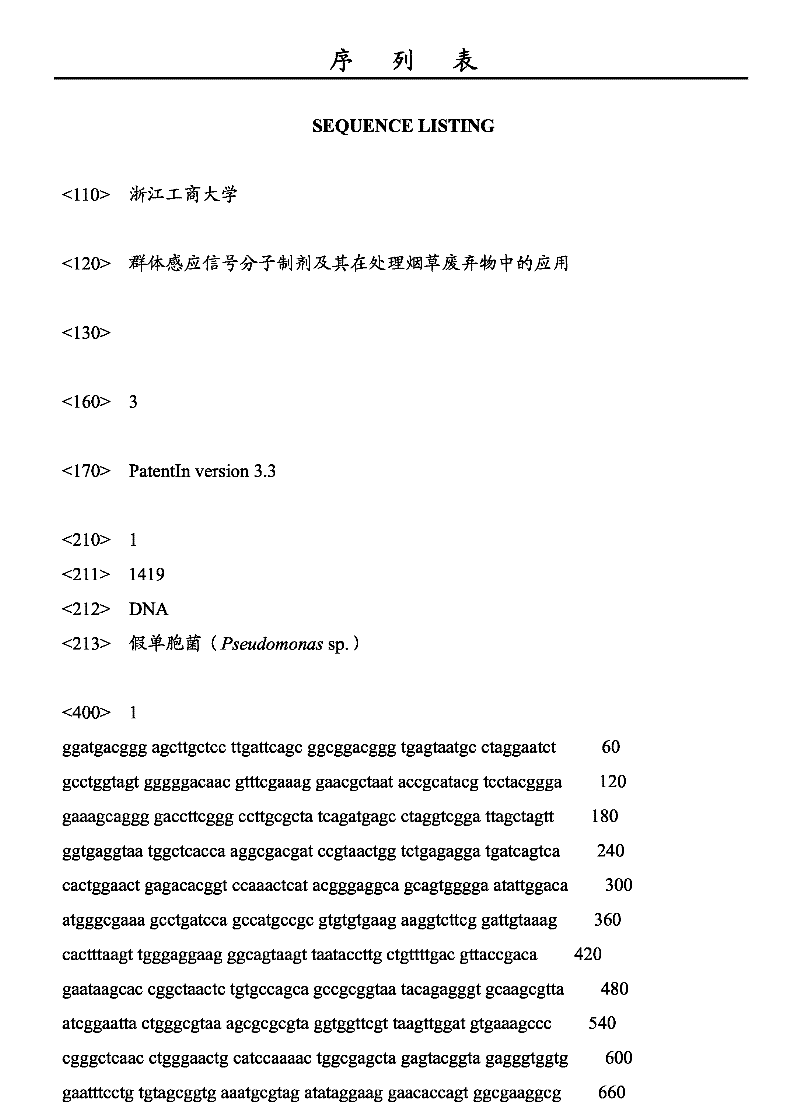Quorum-sensing signal molecular preparation and application thereof in tobacco waste treatment
A quorum sensing signal and tobacco waste technology, applied in the field of environmental biology, can solve the problems of unknown contribution to total COD removal of tobacco waste, increased maintenance costs, unfavorable promotion and application, etc., to improve comprehensive treatment efficiency, increase strain types and quantities , cost reduction effect
- Summary
- Abstract
- Description
- Claims
- Application Information
AI Technical Summary
Problems solved by technology
Method used
Image
Examples
Embodiment 1
[0026] Example 1 Treatment of Tobacco Waste Using Pseudomonas HF-1 and Quorum Sensing Signaling Molecule Preparations
[0027] (1) Screening and cultivation of Pseudomonas HF-1:
[0028] Inoculate 5g of tobacco-contaminated soil into sterilized nicotine inorganic salt medium containing 50mL of nicotine with a concentration of 1g / L, and incubate at a constant temperature at 28°C; after 7 days, take 1mL of the above culture solution and inoculate it in the same medium, and continue to maintain constant temperature Cultivate for 7 days; transfer 4 times in succession to enrich nicotine-degrading bacteria. Dilute and inoculate the enriched culture obtained on the nicotine inorganic salt solid medium, and culture at a constant temperature of 28°C for 2-3 days, pick different single colonies, continue to dilute and spread on the above-mentioned plate for constant temperature culture; so continuously for 3 Once, a pure nicotine-degrading strain was obtained.
[0029] After identifi...
Embodiment 2
[0043] Example 2 Treatment of Tobacco Waste Using Arthrobacter TW and Quorum Sensing Signaling Molecule Preparations
[0044] (1) Screening and cultivation of Arthrobacter TW:
[0045] Tobacco waste from Hangzhou Liqun Cigarette Factory was taken and continuously cultured for 14 days to enrich nicotine-degrading bacteria; the enriched culture was diluted and inoculated on nicotine inorganic salt medium for culture; colonies were picked and continued to be diluted and cultured. until a single colony was picked.
[0046] After identification, the single colony was Arthrobacter sp. (Acinetobacter sp.), named Arthrobacter TW. The strain is a Gram-negative bacterium with a size of (0.5-0.7×1.6-2.0 μm), and the colony of Arthrobacter TW is white and moist round; the GenBank accession number of the 16S rDNA sequence of the bacterium is FJ753401. Wang et al. (Wang Meizhen, Yang Guiqin, Wang Xin, Yao Yanlai, Min Hang, Lv Zhenmei. Nicotine degradation by two novel bacterial isolates o...
Embodiment 3
[0055] Example 3 Treatment of Tobacco Waste Using Sphingomonas TY and Quorum Sensing Signaling Molecule Preparation
[0056] (1) Screening and cultivation of Sphingomonas TY:
[0057] Tobacco waste from Hangzhou Liqun Cigarette Factory was taken and continuously cultured for 14 days to enrich nicotine-degrading bacteria; the enriched culture was diluted and inoculated on nicotine inorganic salt medium for culture; colonies were picked and continued to be diluted and cultured. until a single colony was picked.
[0058] After identification, the single colony was Sphingomonas sp., named Sphingomonas TY. The strain is a Gram-negative bacterium with a size of (0.4-0.6×1.6-1.8 μm), and the colonies are light yellow and moist round; the GenBank accession number of the 16S rDNA sequence of the bacterium is FJ754274. Wang et al. (Wang Meizhen, Yang Guiqin, Wang Xin, Yao Yanlai, Min Hang, Lv Zhenmei. Nicotine degradation by two novel bacterial isolates of Acinetobacter sp. TW and Sph...
PUM
 Login to View More
Login to View More Abstract
Description
Claims
Application Information
 Login to View More
Login to View More - Generate Ideas
- Intellectual Property
- Life Sciences
- Materials
- Tech Scout
- Unparalleled Data Quality
- Higher Quality Content
- 60% Fewer Hallucinations
Browse by: Latest US Patents, China's latest patents, Technical Efficacy Thesaurus, Application Domain, Technology Topic, Popular Technical Reports.
© 2025 PatSnap. All rights reserved.Legal|Privacy policy|Modern Slavery Act Transparency Statement|Sitemap|About US| Contact US: help@patsnap.com



